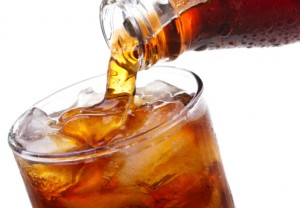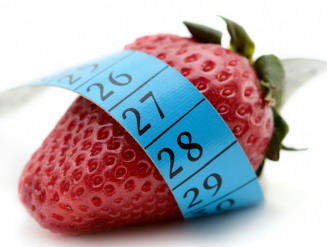Lose Weight > Common Sense To Lose Weight > Common Sense Article > Weight Loss: How To Factor In Food Labels
Weight Loss: How To Factor In Food Labels
A key tool in gathering this information is the nutrition label found on the packaging of almost every piece of food we buy. This little label provides essential information summarized to help you maximize your weight-management efforts. Knowing how to read this label is a vital skill that should be part of every grocery shopping trip.
By simply taking a moment to factor in these nutritional facts, you gain concrete, reliable data that can take the guesswork out of your diet. Here, we give you the skinny on what to look for, so you can quickly get the info you need and get going.
Step One - Look at the Serving Size
This is the single most important piece of information on the Nutrition Facts label. All the other information on the list is based on a single serving size, so knowing this size is vital to understanding the rest of what we're reading.
Consider a chicken noodle soup can, for example. The label says that the soup has 890 mg of sodium, or 37% of the daily-recommended intake for a 2,000-calorie diet. This is not the total for the entire can, it is the total per serving. However, there are 2.5 servings in a single can. This means the can has 2225 mg of sodium, or 92.5% of the daily value. This is the difference between one can being a third of our daily allowance and nearly ALL of our daily allowance.
Step Two - Look at the Categories
There are a number of elements listed, always in a standard order, and again always broken down by serving size. Not every label has every item. Foods made from fruit typically don't list cholesterol, for example. As a rule of thumb, if the label doesn't list it, then that element isn't present (or at least not in a statistically significant amount). These sections typically have a hard number per servings, but also can include sub-sections explaining in more detail.
For example, the categories on our sample soup can include:
Calories: Our chicken noodle soup has 60 calories per serving, with 20 of them coming from fat.
Total Fat: This can has two grams of fat per serving, .5 of which are saturated fats. The can contains zero grams of the particularly troublesome transfats.
Step Three - Look at the Numbers
There are several important groups of numbers on every Nutrition Facts label. Each set of numbers has their own meaning, and can provide a great deal of information.
The first number to consider is typically labeled "%DV," which stands for percent of daily value. A serving of chicken noodle soup has 15mg of cholesterol, which is 5% of the daily-recommended value.
Notice that these percentages, however, are based on a 2000 calorie a day diet. Everyone's dietary needs are different, so the Nutrition Facts label has to shoot for an average. If you were an athlete training on a 2400 calorie a day diet, 5% of your daily cholesterol would be 18mg, not 15mg.
This means that while the percentages are a useful guideline, they can only serve as that. More important are the hard numbers of these ingredients, in grams and milligrams. Consult your dietician or nutritionist and establish what your target daily allowance of calories, fats, and the like will be, and then use that information to determine what your percentages are.
Step Four - Make the Info Count
Of course, we need more than a list of raw data when it comes to taking control of our eating habits. As mentioned above, remember that you need to speak with a professional and identify your specific dietary needs before you can truly take advantage of this information.
For example, a diabetic has different nutritional requirements than someone who is simply a few pounds overweight. For the diabetic, the carbohydrates section will probably be the most important, since it includes the sugar content of the food in question. For someone simply looking to lose a few pounds, knowing the calorie content is probably going to be the focus, so they can compare their exercise to their diet intake. Sodium will of course be relevant to those with high blood pressure, and so forth.
The important thing to remember is that this label is a tool for taking control, not a warning list to make you feel guilty about eating. Yes, our can of soup has a great deal of sodium in it, something that should give us pause. That doesn't mean we have to skip it, it simply means we need to consider reducing salt intake in our other foods for the rest of the day, or perhaps having only half the can at a time, with a piece of fruit as a side.
The Nutrition Facts label is a great opportunity for personal empowerment, because it gives us so much of the information we need, in one convenient place. For example, consider organizing your daily food journal in the same way a nutrition label is laid out. Take some time to examine the labels in your pantry, and find a way you can use this information to help you take control.
Related Articles
-
The Quickest Path to Weight Loss
In order for a diet to produce the results you want you must stick
-
Extending Your Workout Attitude to the Rest of Your Life
Running on a treadmill can be a great wo
-
Child Health, Obesity and The Puppy Fat Myth
There have been more reports on the increasing cases of obesity
-
Open Access Wood Lockers
Open Access Wood Lockers Open access wood lockers are great for athle
-
The Ten Best Diet Foods In Existence
What you eat and what you eat will have a big effect on how quickl
-
Five Simple Steps to A Healthier You in the New Year
At the beginning of every year
- DON'T MISS
- A Unique New Year’s Weight Loss Formula
- Which Procedure Is Perfect for You? Liposuction or Tummy Tuck
- The Secret of Dropping More Than 30 Pounds
- Resistance Is Good! Resistance Training Can Increase Your Weight Loss
- Dieting - Losing The Few Vanity Pounds
- Burning Fat in the Cubicle
- Weight Loss For Teens: Shaping Up Playfully
- Slim Hips And Thighs Tips To Lose Weight From Hips And Thighs
- Weight Loss vs Fat Loss
- What You Can Strive For At Mesa Bootcamps




